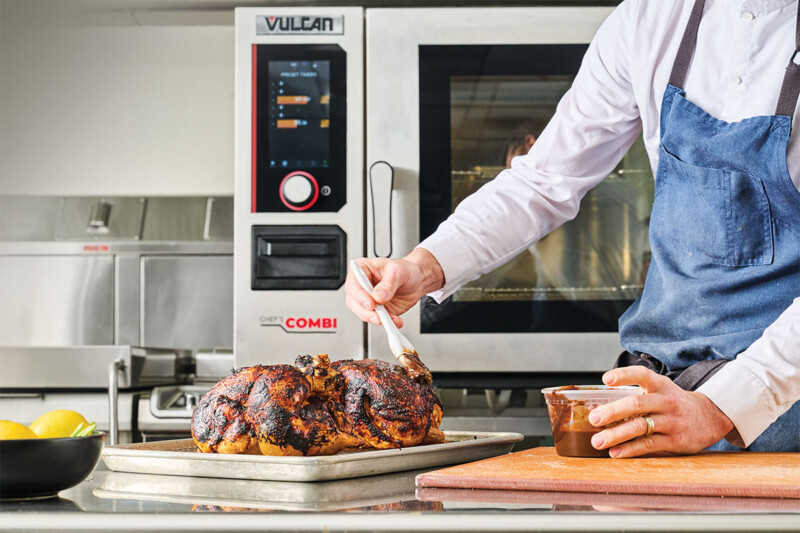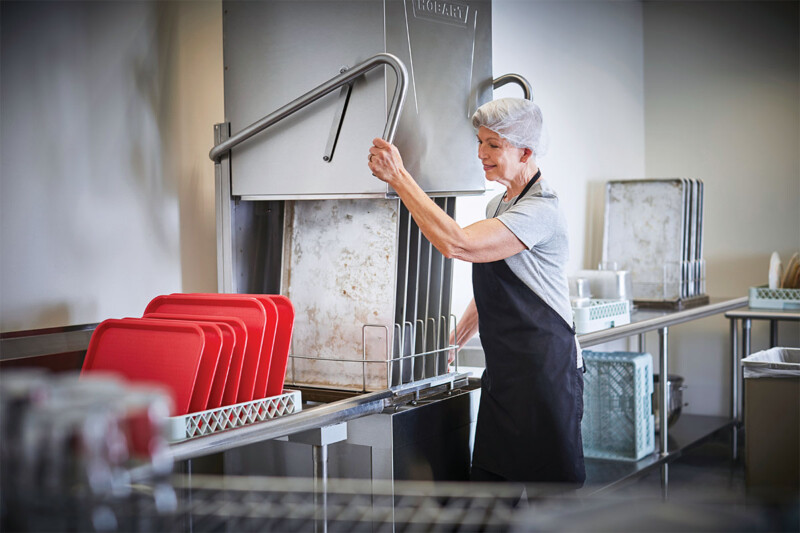The Ins and Outs of Induction Wok Ranges
Coming in various sizes and power levels, these mighty units stand ready to sizzle and conserve energy, but there’s a bit of a learning curve.
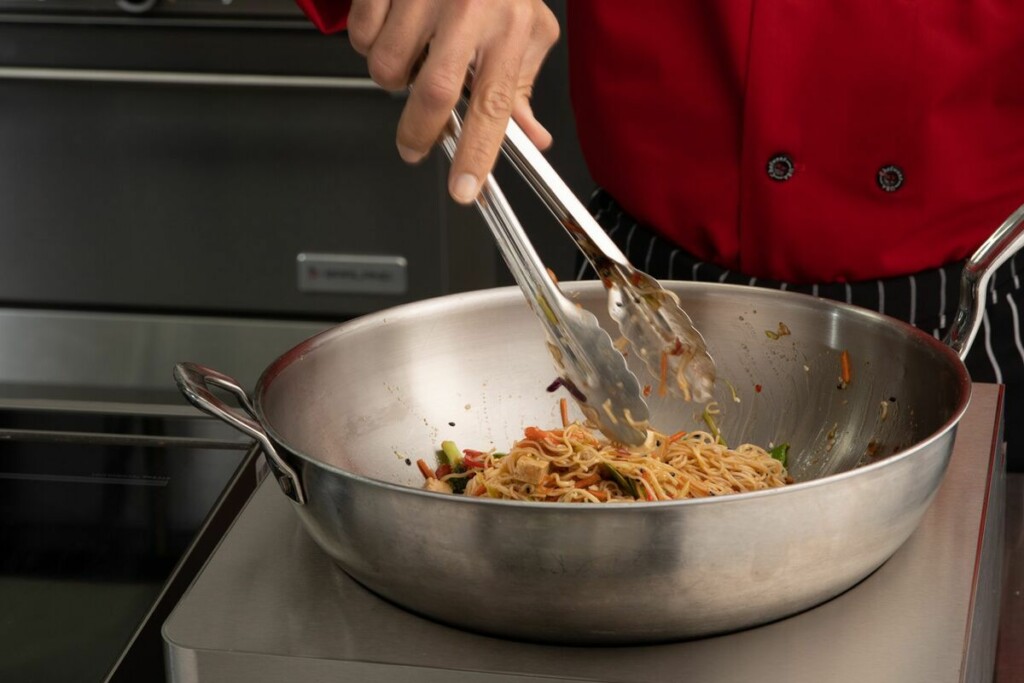
No matter where one resides or aligns their brand’s goals, it’s nearly impossible to ignore the ongoing buzz around electrification.
“What we’re seeing is kind of an industrywide correction to something that we weren’t very good at doing for a long time,” says Mark Duesler, consulting chef for Frontier Energy’s Food Service Technology Center, of a shift toward more efficient kitchens. “ … This is happening relatively quick to an industry that has done pretty much the same thing for a long time.”
For wok cooks—many of whom have muscle memory tied to how the pan and its ingredients interact with an open flame—the idea of extinguishing gas may seem taboo, but manufacturers of today’s induction wok ranges stand by the comparable abilities and added perks of this equipment option. In fact, makers even insist that you can achieve wok hei (or the “breath of wok”) on an induction unit.
The Right Fit
Countertop and/or drop-in induction wok burners are offered by the majority of manufacturers in the space. While the induction tech in the unit resembles that of typical, flat induction units, the wok burner gently curves to match the distinctly shaped pan and a metal rim protects the top edge—adding durability for cooks who are lifting and lowering the pan to flip ingredients.
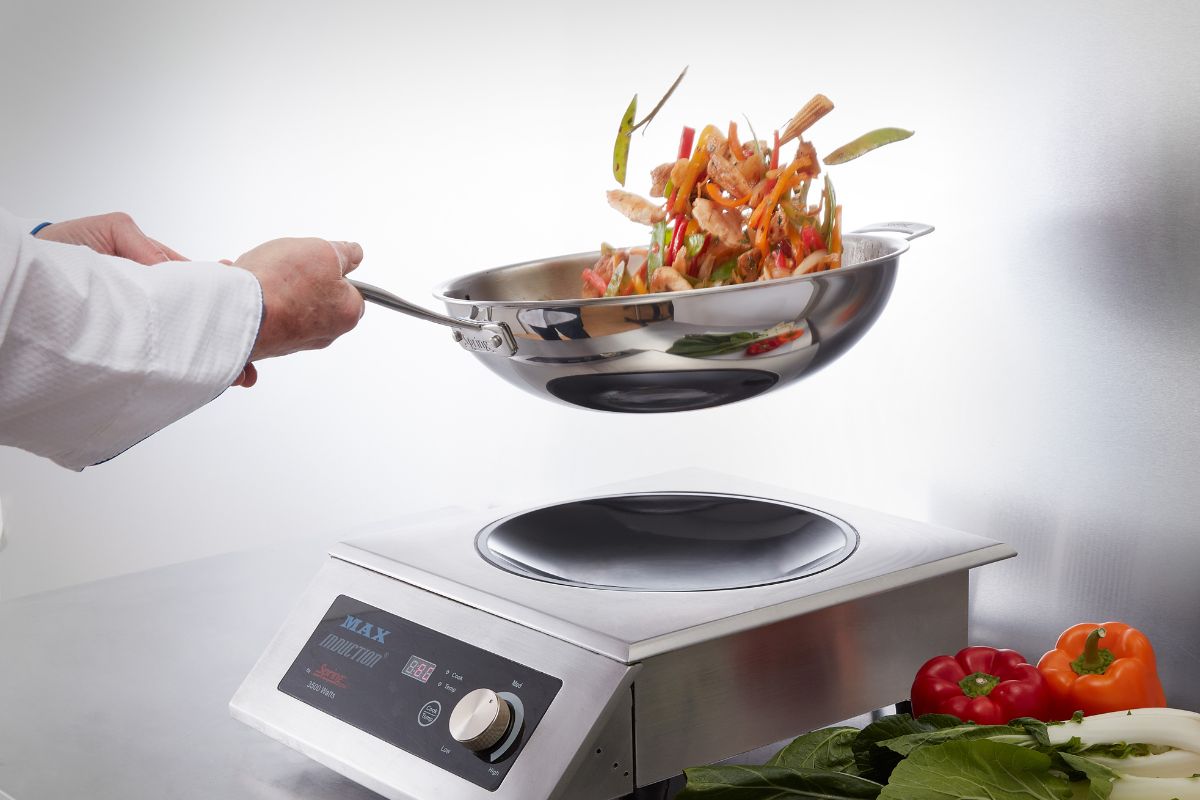
Countertops units tend to lean toward a la minute style cooking, whereas full-size options exist for operators with a higher throughput. Courtesy of Spring USA.
A select few makers offer full-size induction wok ranges, ideal for high-throughput operations with a wok-reliant menu mix. Currently, such models—with up to two burners—are finding homes in corporate settings (like Microsoft headquarters’ all-electric kitchen) or buildings (or certain floors within buildings) without access to gas.
While the full-size options carry a higher price tag than gas models, operators will save in other areas, with a cooler kitchen and lesser ventilation requirements marking a couple induction-specific pros.
The lighter-duty countertop wok burners lean toward a la minute cooking, with makers seeing one or several of the small-but-mighty units end up on buffet lines and at action stations. These more flexible hobs also mark a valid option for space-restricted kitchens, as the models’ dimensions average at around 15-in.W x 18½-in.D.
All models are easier and quicker to clean than gas burners, too, as the burners quickly cool upon pan removal, and staff members can easily pick up the lightweight countertop models to clean underneath them.
Before You Buy
Now that you know the range of what’s available, let’s dial in your search even more. Here are some added considerations:
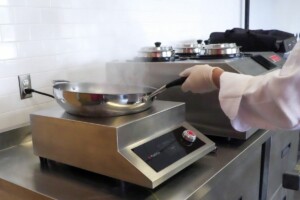
Cooking on the units marks an important step in your equipment search, makers say. Courtesy of CookTek.
Take it for a spin. Cooking on the unit is critical to understanding various factors, makers emphasize. To that end, select test kitchens and the Food Service Technology Center in San Ramon, Calif., where Duesler works, stand ready to serve operators as they try to grasp the differing visual cues, physical motions and cook times that come with induction woks. Heating controls—either power levels, such as 1-20, percentages, or temperature ranges, like 110°F-400°F—are easier to grasp firsthand, too. At least one maker also offers the ability to preset recipe settings. For some, it’s a forced issue to consider electric equipment due to internal philosophies, building setups and more, but Duesler sees an opportunity on the other side of the learning curve. “Humans do our best critical thinking and problem solving when there’s time and pressure applied,” Duesler says. “And that’s a lot of what cooks do, is you have this certain process and you have this desired outcome and you apply, time, pressure and repetition to that, and the cooks will start to figure out techniques to achieve that.” To make a fair comparison, he recommends trying very basic cooking techniques and taking the time to understand and embrace the differences in the cooking process.
Right-size your power and unit. As a trial run would quickly show, induction equipment is very efficient, boasting up to 95% heat transfer, as compared to as little as 35% with gas. “Sometimes [operators] correlate, OK, well, I need to have the biggest power version available, and not necessarily when you’re talking induction,” says one countertop-unit maker. “[A total of] 2,500 or 3,500W at full power, or even three-quarter power, is just as powerful as a 5,000W unit at a lower power. I’ve seen people go out and get that 5,000W version and end up burning everything because they don’t realize how powerful it can be.” The same goes for the full-size units. “We just can’t make those direct transfers from a 35,000 Btu burner to ‘x’kW,” the maker says. “ … In test cooking with one key client, we started with 16kW (or 16,000W) because they wanted to make sure they had enough power, and by the end of the process we were down to 8kW. That’s how powerful the technology is.” Further, available power on-site marks an important factor, both for electrification in general and these units. “There is going to be a limited amount of kW or amp load that you can put into any one space,” one maker says. “You want to make sure that you’re maximizing what it is you’re using from an electrical standpoint, because you could run through a panel really quickly and not have enough for other things.” On the other hand, you also don’t want to overuse and overheat a light-duty countertop unit. At least one countertop model, described as heavy-duty, features five cooling fans to help protect its electrical components.
Given the chance, induction woks—whether full-size or countertop—can work wonders for various types of operations, but making the flip to electric is still optional for many. “This is not an ideological issue,” Duesler says. “It’s more of a ‘What is the best option for my business currently, and in the future?’ so you can develop a plan, start working that plan and have the information at hand. So, when the time comes to make that decision, you already have enough information to be able to, with a degree of confidence, move forward and make that decision at that time rather than being reactive, which we so often are in foodservice.”
Get Efficient
Power up your search for an induction wok range by perusing makers’ newest models.
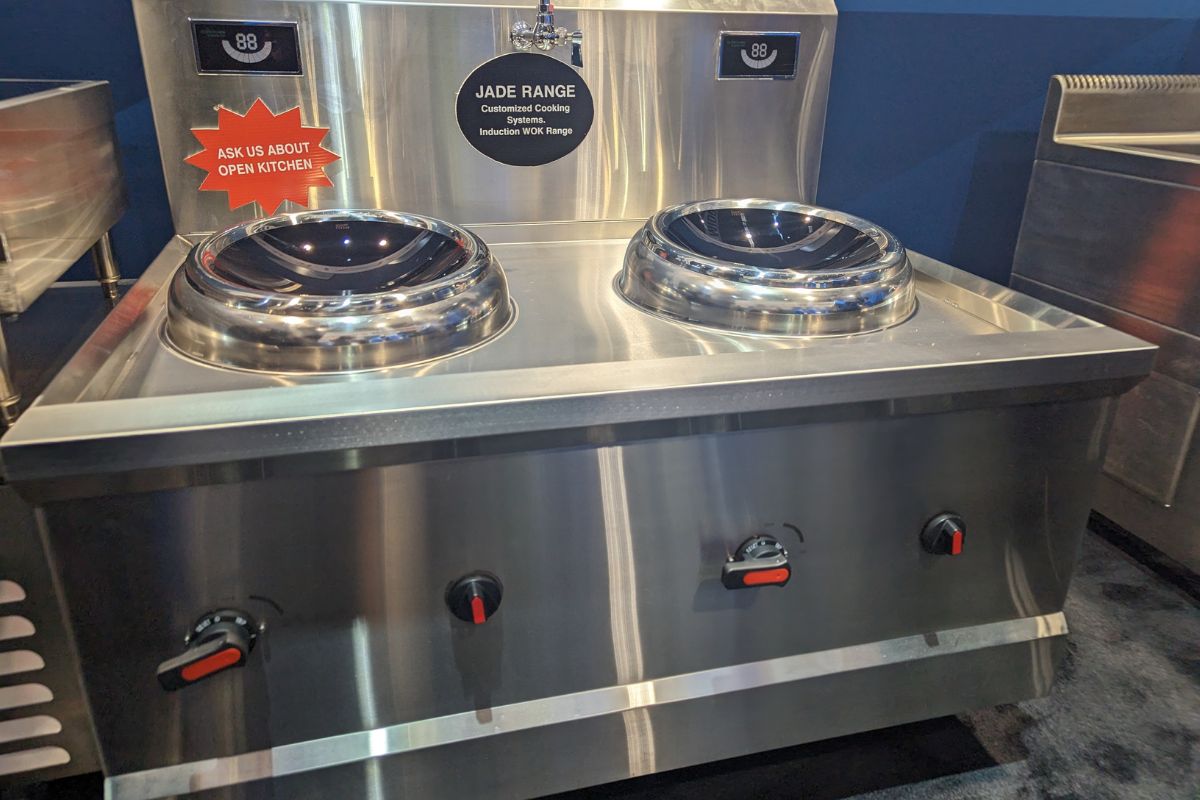
Jade Range
Model: Eco Wok
Power levels: 10
Details: On display at the 2023 National Restaurant Association Show, this 480V, 54-in.W unit, featuring two 12 kW wok burners, is one of the few full-size options on the market. The maker offers custom options, like the addition of a blanching station for vegetables or noodles, and different sized wok burners (with roughly 12-in. or 16-in openings).
Website: jaderange.com
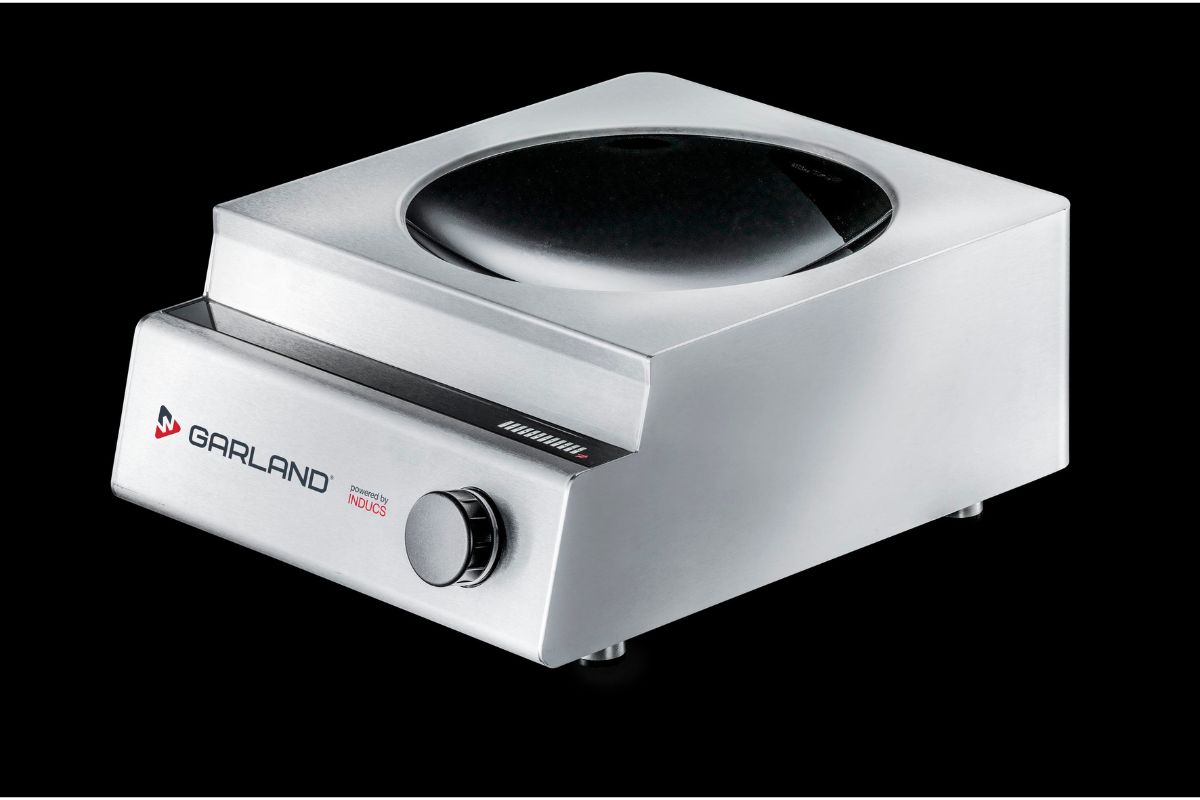
Garland
Model: Instinct Wok Series
Power levels: 12
Details: The countertop unit is equipped with real-time temperature control system technology for accurate temperature readings; an auto shut-off feature keeps the unit from overheating and prolongs its life. One large knob controls all functions. Choose from 3,500W or 5,000W models.
Website: garland-group.com
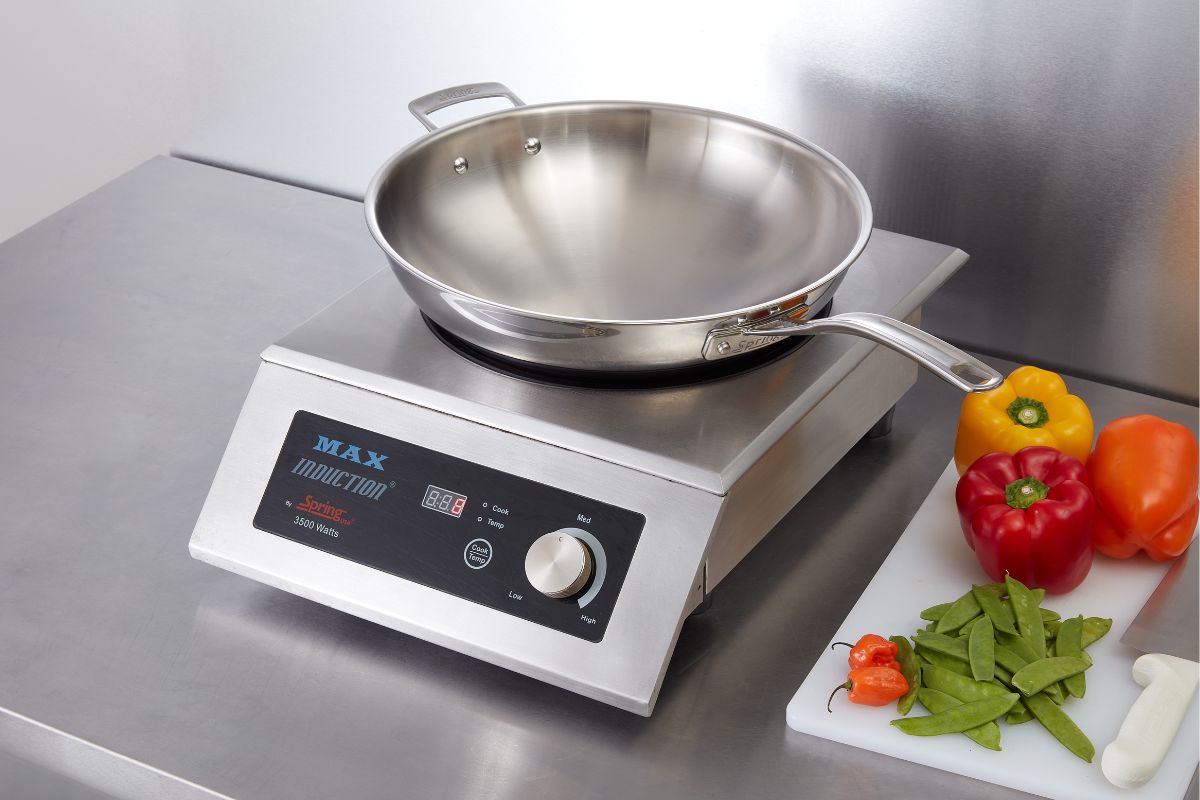
Spring USA
Model: SM-351-WCR
Power levels: 20
Details: Choose between “cook” mode (power levels) or “temp” mode (110°F-400°F) as well as countertop, built-in or custom configurations with this 3,500W unit. The control panel (detachable in built-in applications) features a knob and indicator lights.
Website: springusa.com
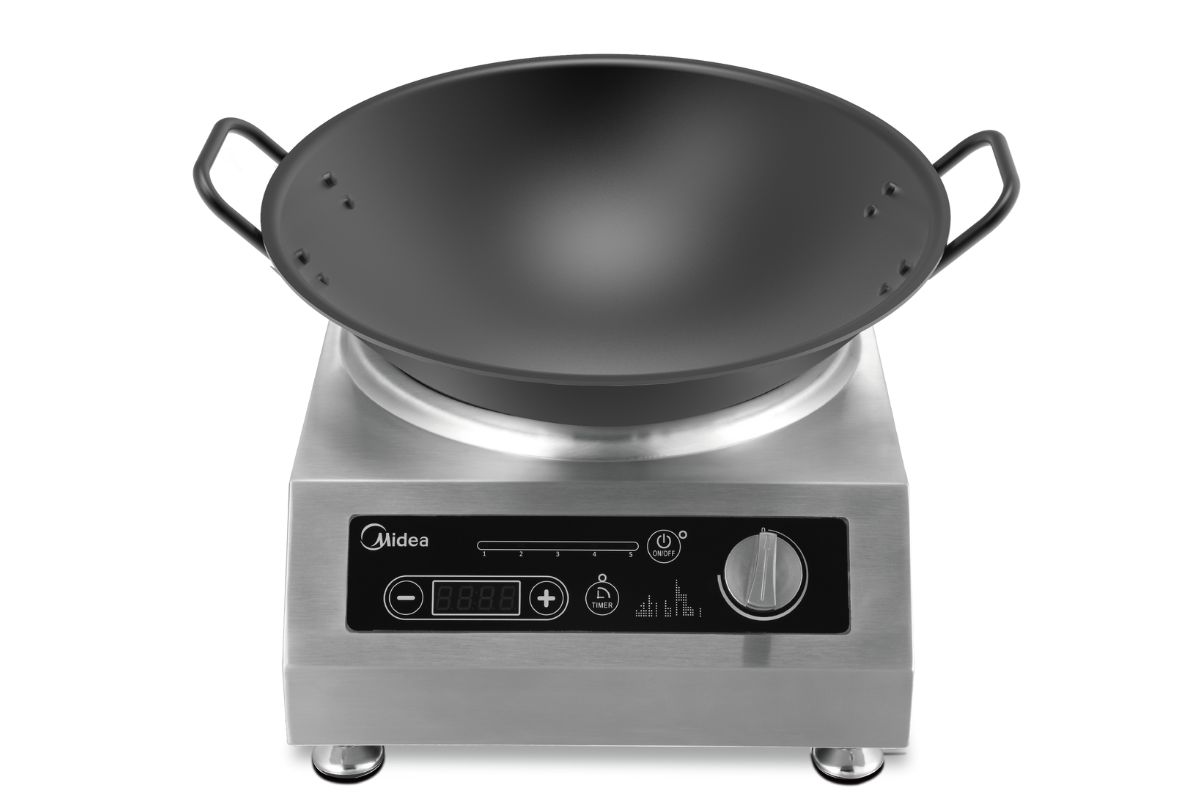
Midea
Model: MIC3400WK
Power levels: 5
Details: The wok pan is included with this 3,400W tabletop model, boasting 90% energy efficiency and five fans to keep components cool. An overheat sensor and sealed motherboard also add layers of protection.
Website: midea.com
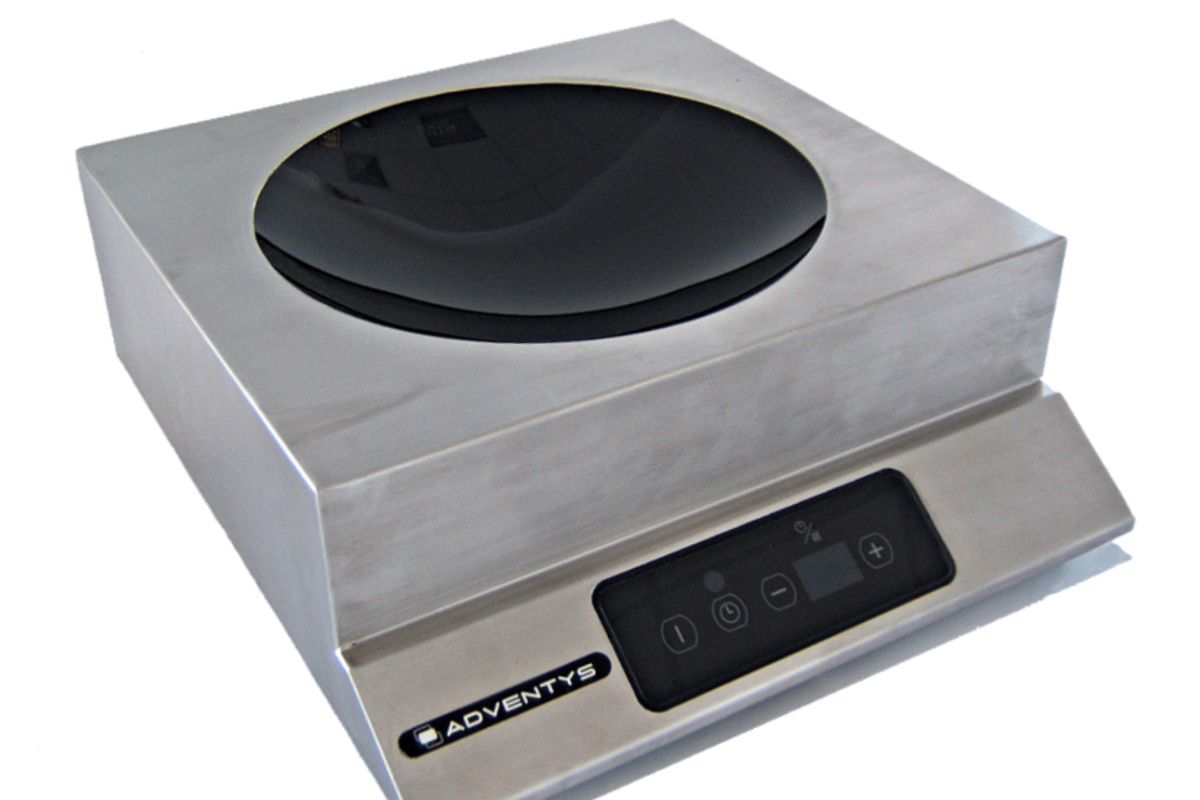
Equipex
Model: GLW3500
Power levels: 20
Details: A 14 1/8-in. diameter wok fits the 11 3/4-in. diameter wok opening on this 3,500W countertop unit. Whether you’re prepping a sauce or stir fry dish, this model’s range of settings allow detailed heat control, and a control panel timer can run for up to 99 minutes.
Website: equipex.com
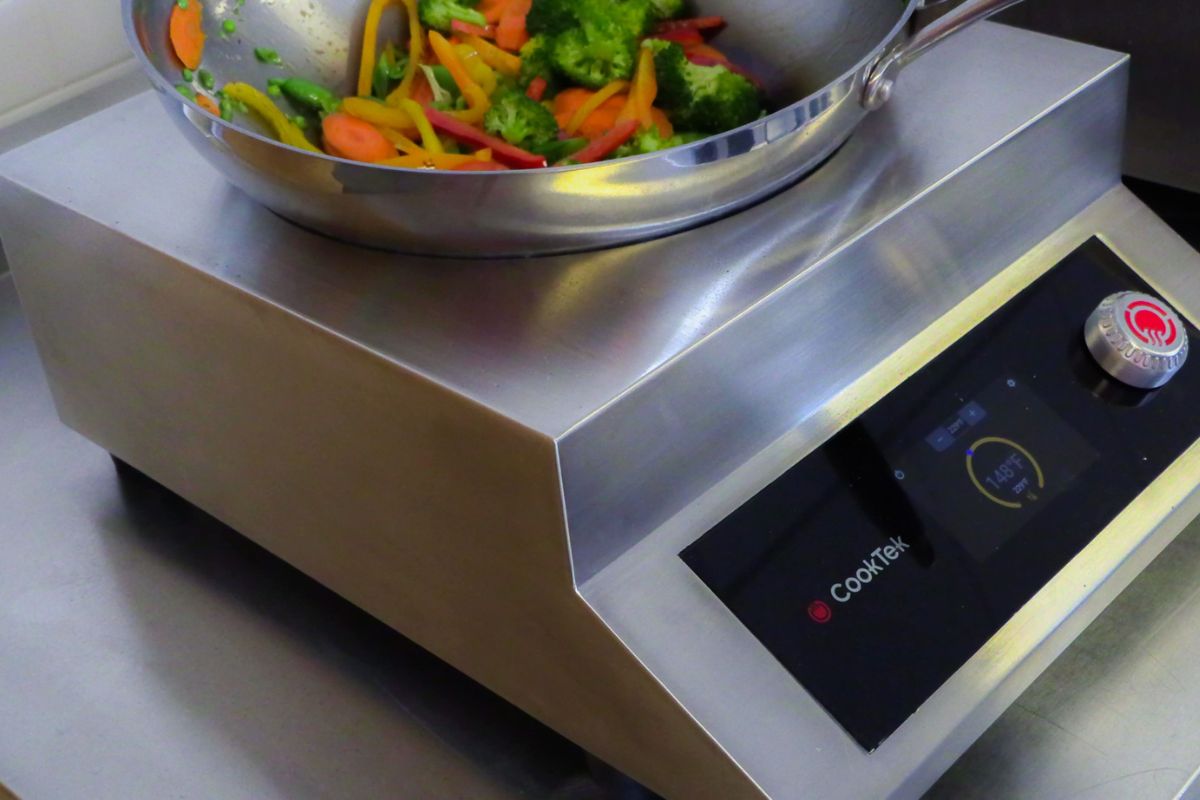
CookTek
Model: Helios Wok
Power levels: 100
Details: The manufacturer says its newest unit is 170% more efficient and three times more powerful than a gas burner. Consider countertop or drop-in options, and specify wattage to your preference (with options from 1,800W to 5,000W).
Website: cooktek.com
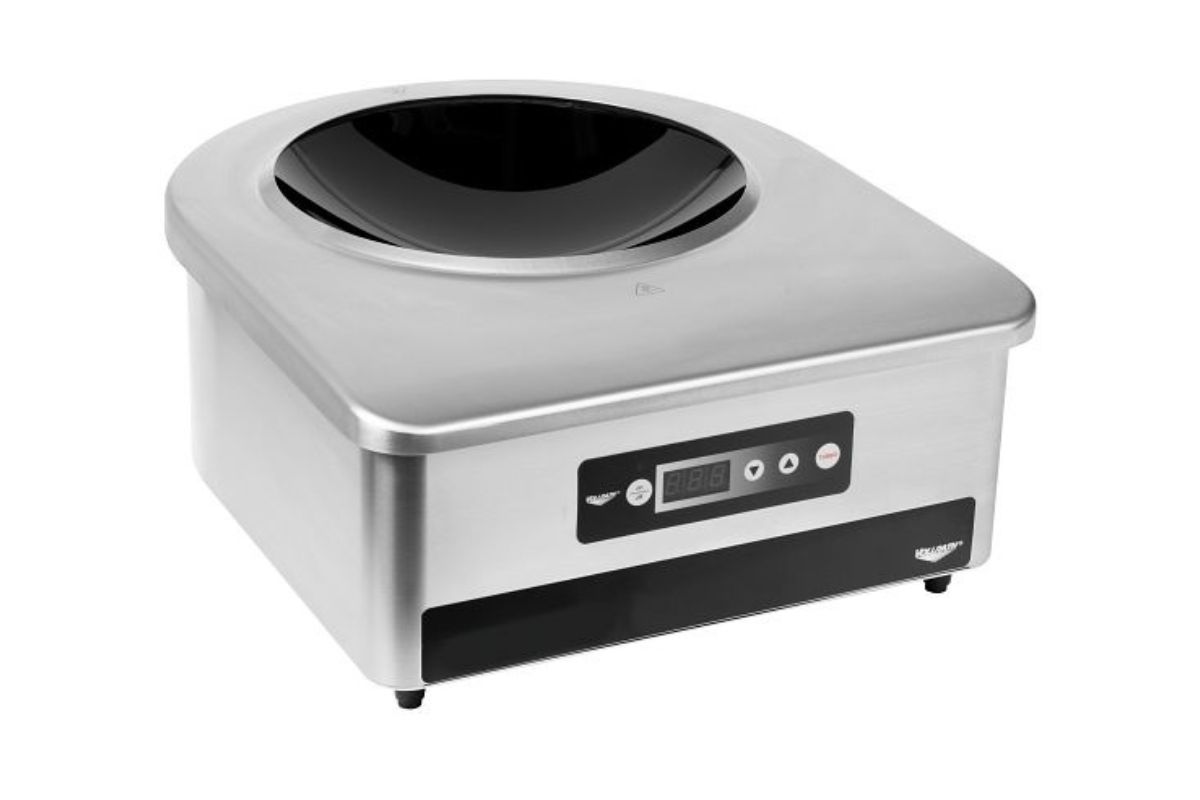
Vollrath
Model: Induction Wok Range
Power levels: 100
Details: Complete with a 14-in. carbon steel wok pan and a turbo button that brings the countertop unit to top heat in seconds, this 3,000-3,500W countertop unit is ready to go. Add an optional accessory kit, which includes a 5-ft. cord for mounting the control panel, for drop-in installation.
Website: vollrathfoodservice.com
RELATED CONTENT
- Advertisement -
- Advertisement -
- Advertisement -
TRENDING NOW
- Advertisement -
- Advertisement -
- Advertisement -

